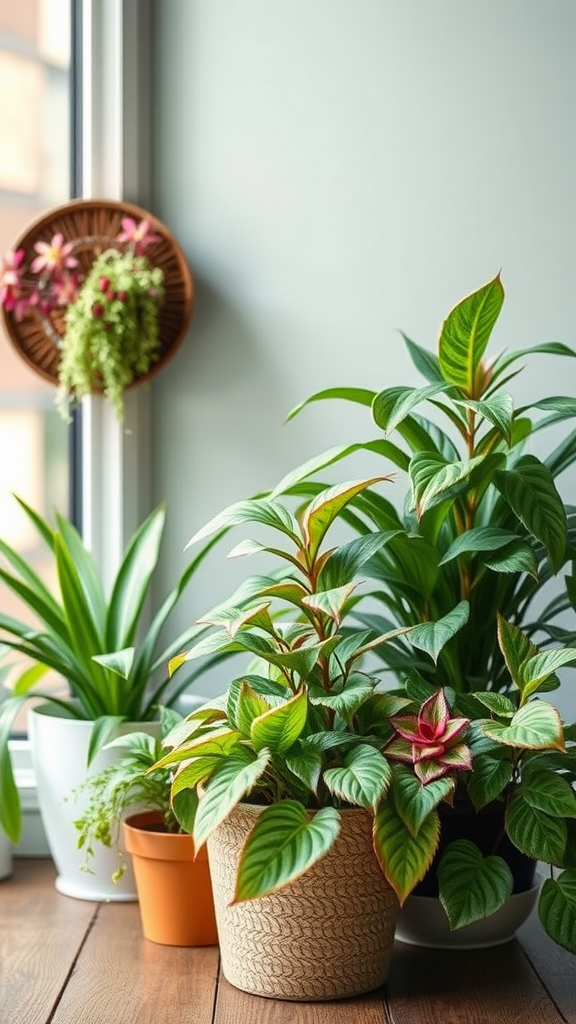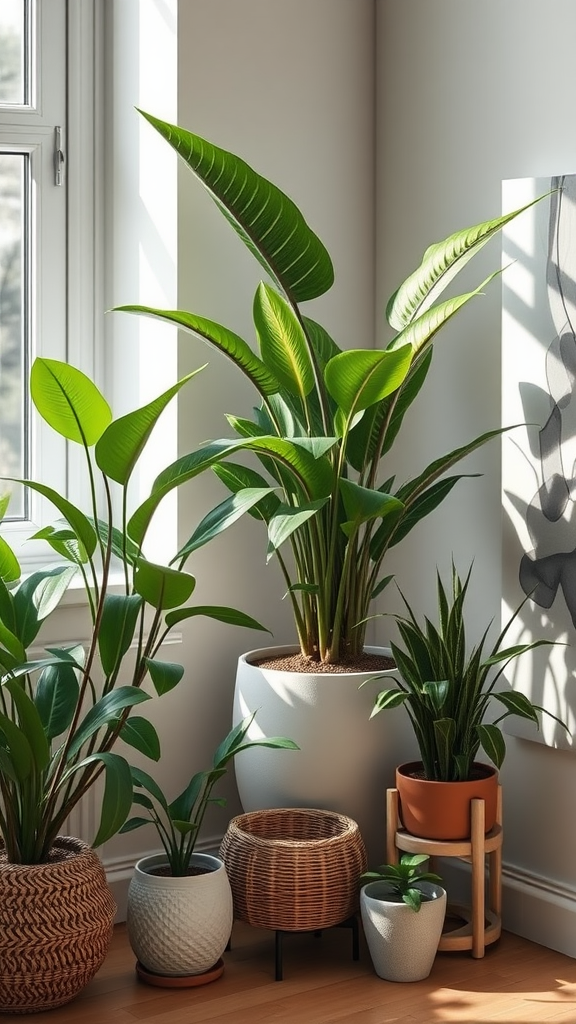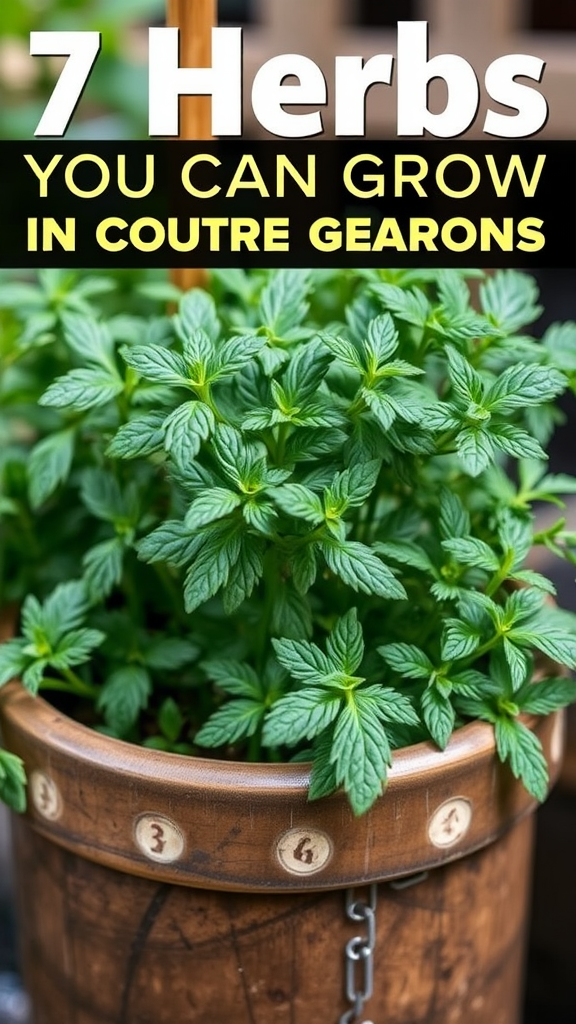Seasonal Plant Care: Essential Tips for Keeping Your Plants Thriving Throughout the Year
Keeping your plants thriving all year round can be a rewarding yet challenging experience. Each season brings unique conditions, and understanding how to care for your plants during these changes will ensure they stay healthy and vibrant. Here are some essential tips to keep your plants flourishing throughout the year.
Spring: Revitalization and Growth
As the weather warms up, plants begin to wake from their winter dormancy. Here are key care tips:
- Repotting: This is the perfect time to repot your indoor plants. Use fresh potting soil and choose a pot that is one size larger than the current one.
- Fertilization: Start feeding your plants with a balanced fertilizer to encourage new growth. Look for fertilizers that suit your specific plants, whether they are flowering, leafy, or cacti.
- Watering: As temperatures rise, plants will require more water. Check the soil moisture regularly, and water when the top inch feels dry.
Summer: Monitoring and Maintenance
Summer can be scorching, and this requires you to adapt your care routine. Here’s what to do:
- Watering Schedule: Most plants need frequent watering during summer. Early morning is the best time to water to reduce evaporation.
- Shade Protection: Some plants may need protection from harsh sunlight. Consider placing them in an area with partial shade during the hottest part of the day.
- Pruning: Trim away any dead or yellowing leaves to promote growth and improve airflow. This is especially important for flowering plants.
Fall: Preparing for Dormancy
As temperatures begin to cool, it’s time to prepare your plants for the winter months. Here are some tips:
- Reduce Watering: As growth slows down, plants will need less water. Make sure you allow the soil to dry out between waterings.
- Bring Indoor Plants Inside: If you have outdoor potted plants, bring them indoors before the first frost. Make sure to check for pests first.
- Mulching: For garden beds, apply a layer of mulch to protect roots and retain moisture during cooler days.
Winter: Special Care Needs
During winter, plants often enter a state of dormancy. Here’s how to care for them:
- Control Indoor Humidity: Indoor heating can lead to dry air. Use a humidifier or place trays of water near your plants to maintain humidity levels.
- Less Watering: Most plants require very little water in winter. Ensure the soil dries out before watering.
- Light Requirements: Days are shorter, and light levels drop. Rotate plants to ensure even exposure and consider using grow lights for those that need more sunlight.
General Tips for Year-Round Care
In addition to seasonal tips, here are some general care practices to keep your plants healthy:
- Know Your Plants: Research the specific needs of each plant, including sunlight, watering, and soil preferences.
- Pest Management: Regularly check your plants for pests. Remove any infested leaves and consider organic pest control options.
- Cleanliness: Keep plant leaves dust-free. Wipe leaves with a damp cloth to allow better light absorption.
With the right seasonal care practices, you can keep your plants thriving no matter the time of year. Adapting your approach based on the season will help your indoor and outdoor plants flourish. Remember, enjoying plant care is all about learning and engaging with your green companions. Happy planting!
Understanding Plant Growth Patterns: Adapting Care Techniques for Different Seasons
Understanding how plants grow throughout the year is essential for anyone who wants to keep their greenery flourishing. Each season brings unique challenges and opportunities that can affect your plants’ health and growth. By adapting your care techniques based on these seasonal changes, you can help your plants not just survive but thrive.
Spring: Time for Awakening
As winter fades and temperatures rise, many plants enter a phase of renewal. In spring, it’s crucial to give your plants extra attention as they begin to grow after their winter dormancy. Here are some key practices to consider during this vibrant season:
- Pruning: Trim dead or damaged leaves and branches. This encourages new growth and enhances air circulation.
- Fertilizing: Use a balanced fertilizer to support the new growth. Opt for organic options when possible to promote healthier soil.
- Repotting: It’s a great time to move your plants into larger pots if they’re root-bound. Fresh soil ensures they get the nutrients they need.
Summer: Embracing the Heat
In many regions, summer can bring heat and longer days. While this is an active growing time for a lot of plants, it requires some extra care. Here’s how to adapt:
- Watering: Increase watering frequency, especially for plants in pots. Make sure the soil remains moist but not waterlogged.
- Mulching: Apply mulch to retain moisture and regulate soil temperature. This can also help prevent weeds.
- Sunlight Management: Some plants may struggle with intense sunlight. Consider providing shade cloth or moving potted plants if needed.
Fall: Preparing for Slumber
As temperatures chill and daylight shortens, plants start to prepare for dormancy. Autumn is a key time for taking a few important steps to ensure your plants are ready for the coming winter:
- Reduce Watering: As growth slows, the water needs of plants decrease. Water less frequently to help prevent root rot.
- Fertilizing: Switch to a low-nitrogen fertilizer if you continue fertilizing plants. This helps them prepare for dormancy.
- Move Indoors: If you have houseplants or tropical plants, consider moving them indoors as temperatures drop.
Winter: Deep Rest Phase
Winter is a time when many plants enter a state of rest. They require minimal care, but specific techniques can keep them healthy through the cold months:
- Light Management: Ensure your plants receive sufficient light indoors. Supplement with grow lights if necessary for plants that require more light.
- Humidity Control: Indoor heating can dry the air. Use a humidifier or place trays of water around your plants to maintain humidity levels.
- Monitoring for Pests: Be vigilant about checking for pests that may seek warmth inside your home.
It’s essential to pay attention to your plants and be aware of their changing needs throughout the year. Keeping a seasonal plant care journal can also be helpful. You can note different growth patterns, watering schedules, and successful techniques to refer to in the future.
By understanding plant growth patterns and adapting your care techniques for each season, you empower yourself to keep your plants thriving year-round. Regular observation and adjustments ensure that your plants flourish, providing beauty and fresh air to your home or garden.
Conclusion
Caring for your plants is a journey that evolves with the changing seasons. By understanding the unique growth patterns of your plants, you can adapt your care techniques effectively throughout the year. Whether you’re making adjustments to your watering routine, adjusting light exposure, or changing your fertilization strategy, every season presents different challenges and opportunities for your plants.
As seasons shift, so do the needs of your greenery. Spring and summer are times for robust growth, requiring more water and nutrients. Monitoring light levels becomes crucial during these vibrant months. As we transition into fall and winter, your plants will need a different approach—reducing watering and providing adequate protection from the cold will help maintain their health during dormancy.
Paying attention to these seasonal changes not only keeps your plants thriving but also enriches your gardening experience. Engaging in this dynamic process helps you build a deeper connection with nature and better understand the lifecycle of your indoor and outdoor plants.
These seasonal plant care strategies into your routine allows you to nurture a flourishing garden that stands resilient against the challenges of each season. With a little attention and care, your plants can thrive all year long, bringing joy and beauty to your home and garden. Remember, the key lies in observation and adaptation—embrace the journey, and you’ll be rewarded with vibrant and happy plants!





